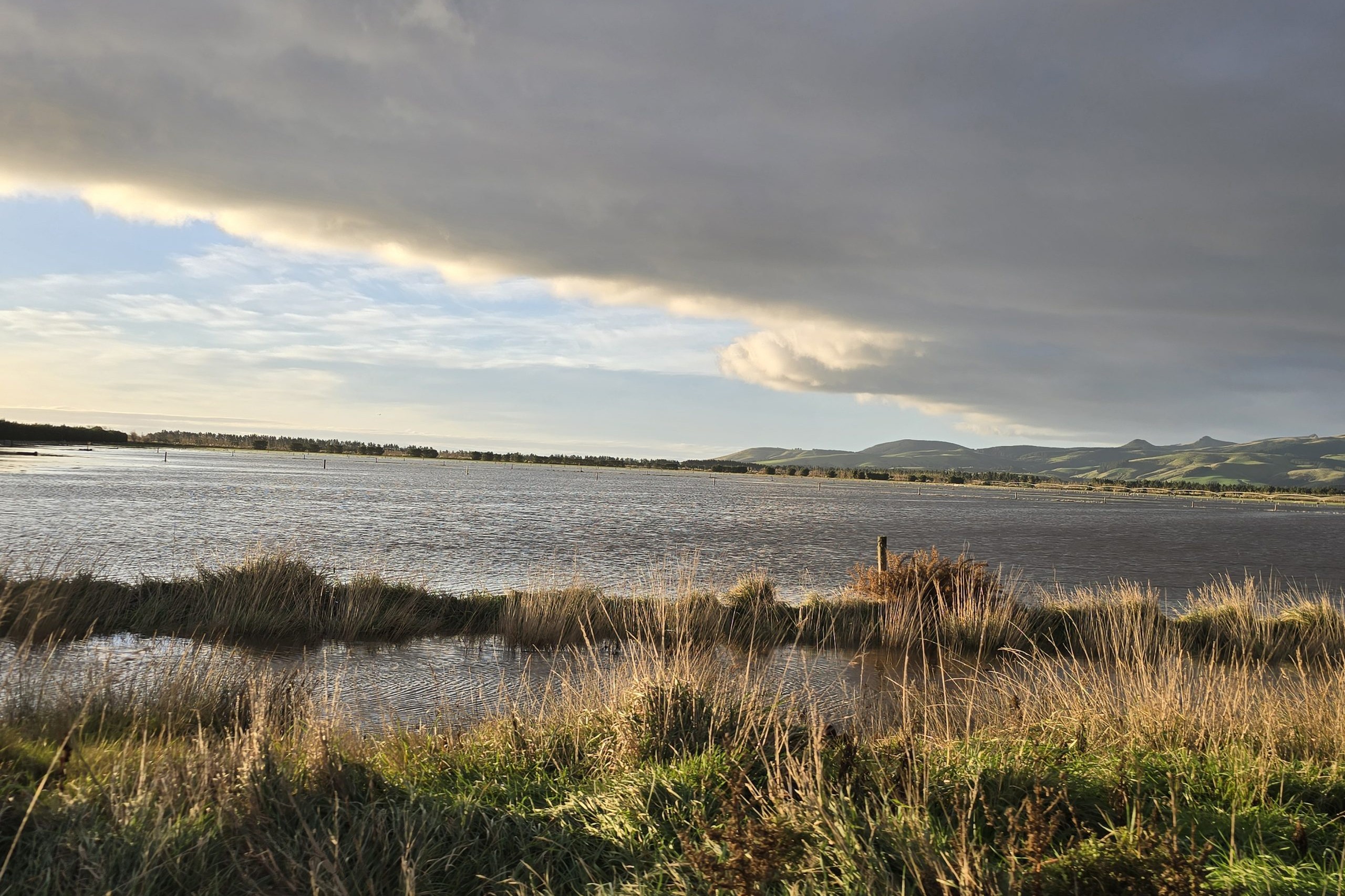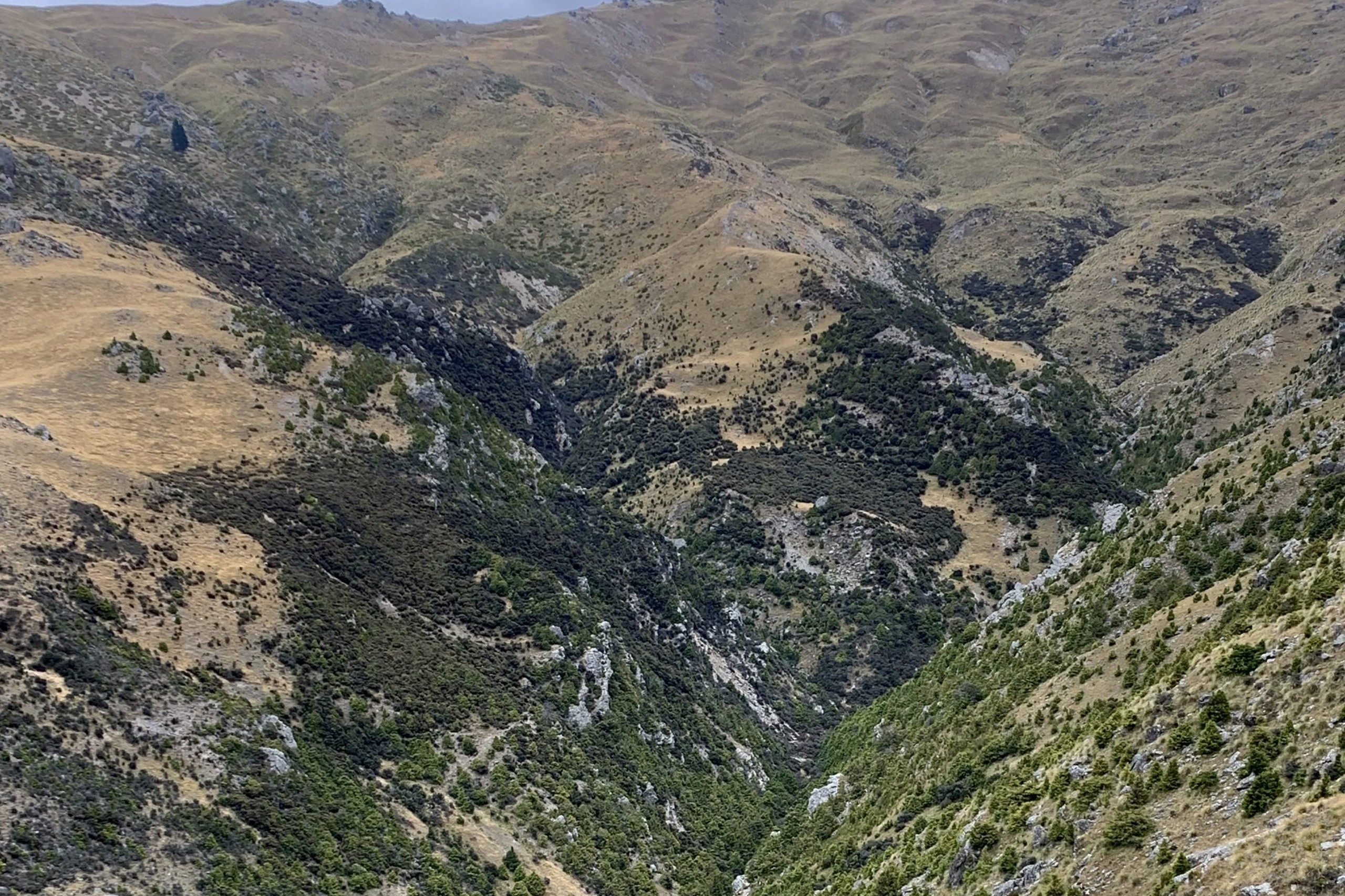Reaping the harvest of a dream autumn at his Balfour, northern Southland farm, Blair Drysdale looks forward sending his latest crop of Belted Galloway/Friesian cross cattle to the works – no joke.
Spring forward, fall back. As daylight savings has come to an end over the Easter weekend, the days are certainly getting shorter in length, but this dream autumn we’re having with ample grass growth just keeps getting better here in Northern Southland, with our local baling contractor telling me it’s the best he can remember in 29 years.
In farming terms, I haven’t been around for very long, but I certainly haven’t seen an autumn with such an excess of quality pasture waving in the wind and being sick of making baleage, while reneging on buying more mouths to eat it due to the cost of doing so. It’s a matter of doing one or the other in the next week to keep some pasture quality going into winter, got to spend it to make it.
They say a farmer with grass at his feet and money in his pocket is his own worst enemy. Back at the end of January we didn’t have an excess of either, were away on holiday and relied heavily on the thoughts of my father and bought a unit load of store lambs.
It’s the first time we’ve bought any reasonable number of store lambs, but the educated gamble is paying a rather nice dividend killing them at 18.8kg average so far and a very near $7 schedule. The decision now is whether we burn the profit and buy more in for what is looking like being a very good spring contract or bank it? The bank manager may have a say in that.
Jody and I have reared our fair share of calves over the last nine years, having even milked 12 cows initially for three years to rear Hereford, Angus and Charolais calves out of Friesian dairy cows.
We also turn over between 50 to 60 empty R2 Friesian dairy heifers every year, with an agent buying them for us at 370 to 400kg liveweight and aiming for a quick turnaround killing them at a 235kg average carcaseweight. They’re relatively easy to put weight on and are very good at tidying up fence lines in the cereal paddocks after harvest.
In a week’s time and a good three weeks later than last year, we’re about to weigh off the top 40 to 50 cattle from our main beef herd and this is where it gets interesting (and some will laugh). They’re a cross breed that I cop a fair bit of stick over and I must say its unjustified as they perform very well for us here. Yes, it’s the cattle with the undeserved title of hobby farmer or lifestyle cattle, Belted Galloway/Friesian cross.
Jody and I have reared our fair share of calves over the last nine years, having even milked 12 cows initially for three years to rear Hereford, Angus and Charolais calves out of Friesian dairy cows. Somewhat nervously we changed, but after three years of rearing the Belty calves we’ll never go back simply because they have outperformed all the other breeds within the same timeframes.
Last year 75% of the Belties were sent to the works at 18 months before their second winter, between March 4 and April 5, at 259kg average CW, an average yield of 54% and returning $1398.60/head. Not too bad for a breed that isn’t well recognised as being a true beef breed in this country. As long as they’re out of big, well-bred Friesian cows, there’s plenty of frame to hang a lot of meat on, not to mention it’s the best steak that’s come off a frying pan in our house.
It really is a case of don’t knock it until you’ve tried it. I very nearly did and knowing what I do now would regret having done so. They’re the most deceiving cattle to look at when judging their weight and blow my mind when they go over the scales and off to the works.
It’s sad to finish on this note, but to those who have unfortunately been severely affected by Mycoplasma bovis and under the direction of MPI now have to slaughter their herds, calves included, with years of breeding and hard work having gone into them, you have our sincerest sympathy. I can’t for a moment imagine what that’s like, to see your livelihood and animals you recognise individually and cherish disappear via truck, none of us can.
I just hope MPI gets to the bottom of this and definitively finds its pathway into our country, that we learn from it and make bloody sure such a biosecurity incursion never happens again, ever.




